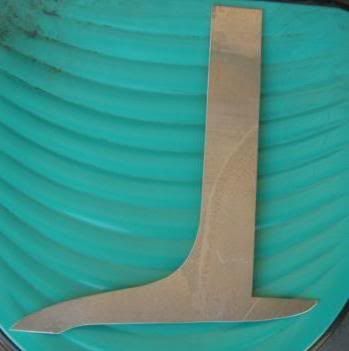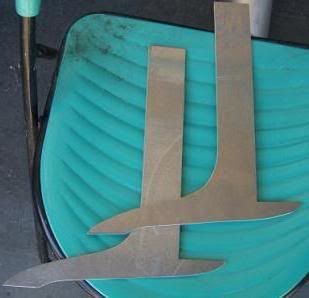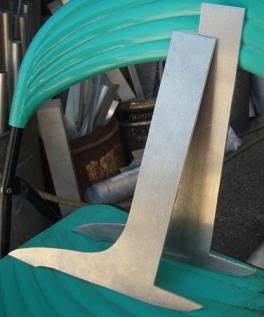[quote="$1"]
The most futuristic surfing I've ever seen was Laird on his foil board, but unfortunately I have not seen anyone take that ball and run with it.
The yachties are always way ahead of surfers on the evolutionary wave. They were way ahead as far as composite construction and now they're doing stuff like this, even on the small scale, low budget stuff.
Time for surfboard makers to step up.
[/quote]
Excuse me.........a bunch of us stepped up about 30 years ago. Okay, give or take a year. In 1980 when windsurfing finally starting taking hold, there were two major camps of designers that surfaced: boat designers & surfboard shapers. A number of us shapers were on the forefront by spending the time to learn how to windsurf so that we could fully understand how a sailboard works.
There were different disciplines that developed as the sport began thriving in the United States: big board & slalom course racing, speed sailing, and surf sailing. I was deeply involved in the surf, slalom and speed disciplines. By the early 80's I had team rider Brett Lickle on leading edge equipment riding 60 ft. waves with best buddy Laird. They and a few others pioneered Jaws and assorted cloudbreaks on surf sailboards that led the way to tow in surfing. I made all of Brett's equipment during the decade, and he trusted his life on my equipment.
The boat designers were creating windsurfing equipment that were sound in principle, but what I considered aesthetically to be abortions. Brands like Meritex Seaquest, some of the early O'brien Equipment, and too many others that fell along the wayside come to mind, but aren't worth mentioning. Two of the higher grade companies had me shape polyurethane customs for their riders that evolved into molded boards within their lineup. One most notable, was a racing board for Olympic athlete Rob Hawley. One of my race boards also clocked the 2nd fastest record at the San Luis Reservoir being beaten out only by Fred Haywood on a Jimmy Lewis speed board. The speeds were clocked by radar and there were over 300 international competitors present. We effectively became the fastest hull in the world powered by natural forces.
During that period of the early 80's, competitions were on the rise, and I had the distinction of being Assistant Head Judge for a multi discipline "World Cup". The course racing was held in San Francisco, while the surf discipline (where I was) was held at Waddell Creek, north of Santa Cruz. The events were viewed by thousands of spectators. Unfortunately the wind dropped for the wave event, and to keep the spectators entertained, they decided to hold a surf contest with the competitors required to ride a sailboard with its footstraps still on. I was allowed to compete in this as it was only a fun event and voluntary. I ended up getting 2nd in the finals behind Maui Meyer. My tube ride scored high, but he beat me out with a headstand!
Anyway, as far as us stepping up.......keep in mind that it was the surfboard designers that created eye pleasing equipment due to shaping surfboards all along. As one of the leading edge custom manufacturers of the era, my research & development comitted thousands of dollars in testing new materials and countless designs that eventually would crossover into surfboard design. Nearly every 'new' technology you see incorporated into today's molded surfboards directly descended from what we were doing with sailboards throughout the 80's.
The yachties actually looked to us, or at least that is what was stated to me by Dennis Connor, winner of The America's Cup when we met in San Francisco during the World Cup. I was telling him how the members of the Santa Barbara Yacht Club looked down their noses at us as poor lowly sailors of some sort. Dennis responded by telling me that he looked to us with for leading edge developments in sailing at that time.
The windsurfing sailmakers like Geoffrey & Borne (Neil Pryde sail designers), fellow windsurfer buddy Danny North (North Sails), and a bunch of surfing sail designers at Gaastra were coming up with incredible new concepts like Rotating Assymetrical Foils (RAF's), Camber Induced Sails, different flex patterns for battens & masts, improved downhaul systems........and as board builders we were building ulltralite EPS carbon, E, K, & S2 reinforced epoxy boards that were the Ferrari's of all sailboards. Fins were exploding in deisgn as well with slotted fins, canards, and new foil chords and high aspect ratios for the new dynamics windsurfing presented to us.
This was the richest period of time for me as a surfboarrd/sailboard/watercraft designer. By comparison, the 80's decade for surfboards was reatively stagnant after the intoduction of Simon Anderson's thruster. Although my business "The Surfing Underground" continued to produce hundreds of surfboard each year, the difference was a surfer hedging at surfboard prices approaching $400 while my windsurfing clientele paid $1,000 upfrot for their hulls (I sold boards with footstraps mounted and high grade fins, not any other equipment such as sails, booms masts and universals. Still, surfers benefitted greatl from all my R&D on sailboards........for instance, I was shaping single double tri and quad concaves on a daily basis and began to crossover those concepts to surfboards. The vertical square tail rails, sanded bottoms, and hard basted edges were just a few other design elements that came to fruition. Fins were improved dramatcially during the 80's as well.
As far as surfboard manufacturers lagging behind the yachties, this isn't really true of the leading edge surfboard designer builders. The evolution of Surftech was once a young struggling sailboard company called "Seatrends" started by Santa Cruz surfer Randy French. "Boardworks" is another supplier of alternative technology surfboard production, and there is quite a bit of PVC, wood, and high density foam vacuum bagging going on by many on Swaylocks.
For me personally, I think there was a time that I fell in love with the notion that in order to be a 'real' professional company producing a product, that I had to look like something stamped out of a machine. I don't feel that way now. I love the fact that much of surfboard making is a craft, that no two are exactly alike. Instead of trying to reinvent the wheel and mimic some other product that has no soul, I feel that handcrafted surfboards are a thing of beauty that offer surfers and shapers the experience of interacting in a quest for perfection.........or whatever magic may mean to that one particular surfer.
[IMG]http://i140.photobucket.com/albums/r31/llilibel03/49erruder.jpg[/IMG]













